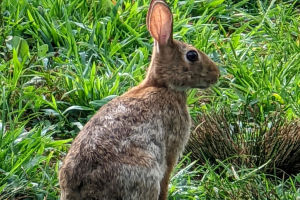Have you ever gently stroked a cat and suddenly heard that soft, comforting purring sound? We all know cats often purr when they're happy, but have you ever wondered why exactly they do it?
Today, we're going to explore together why cats purr when we pet them, what it means, and how this little sound connects us more deeply with our feline friends.
What Is Purring, Really?
Purring is a unique vibration produced by cats, often described as a "hum" or "buzz." It happens when the cat's brain sends signals to muscles in the voice box (larynx), causing them to twitch at a rapid rate. This twitching causes the vocal cords to open and close quickly, creating that familiar purr sound.
Interestingly, purring is not just about happiness—it's a complex behavior with different meanings depending on the situation.
Purring Means Contentment
When we pet our cats and they start to purr, it's often a sign that they feel relaxed and comfortable. It's their way of saying "I trust you" and "I'm happy here." This connection through purring builds a sense of closeness between us and our cats. When we feel their gentle rumble under our hands, it can be calming for us too!
More Than Just Happiness
But purring isn't only about feeling good. Cats also purr when they are nervous, scared, or even in pain. For example, a cat might purr at the vet or when injured. Researchers believe that purring may act as a self-soothing mechanism, similar to how humans might hum or rock themselves when stressed.
Some studies suggest purring might even help cats heal faster—vibrations between 25 and 150 Hertz, the typical purring range, could promote tissue regeneration and reduce pain. So when we hear a purr, it might also mean the cat is comforting itself.
How We Affect Their Purring
When we gently pet or pet our cats, especially in favorite spots like behind the ears, under the chin, or along the back, we activate their pleasure sensors. This physical touch can stimulate the brain to release feel-good chemicals like serotonin, which encourages purring.
By petting cats the right way, we help them feel safe and loved, which naturally leads to more purring. Every cat is different, so learning what your cat enjoys most helps strengthen your bond.
Do All Cats Purr the Same Way?
Not all cats purr the same. Domestic cats often purr loudly and frequently, but wild cats like lions and tigers purr only softly or not at all. Also, some cats are quieter purrers, while others make a deep rumbling sound.
Understanding your cat's unique purr helps us better respond to their mood. A soft, steady purr during petting usually means happiness, while a fast or irregular purr might mean discomfort or stress.
Can We Purr Back?
While we can't purr like cats, we can respond with calm voices, gentle touches, and attention. This positive feedback loop makes cats feel safe and encourages them to keep purring. It's a beautiful example of how communication goes beyond words, creating a shared language between us and our pets.
Signs That Purring Means More
Sometimes a cat's purring may mean it needs help. For example, if your cat is purring but also hiding, refusing food, or acting strangely, it might be in pain or distress. In such cases, purring is a sign that they're trying to soothe themselves.
Experts remind us to watch other body language like ear position, tail movement, and eye shape to fully understand what our cat's purring really means.
Why We Should Listen More Closely
Purring is a small but powerful way cats communicate with us. It shows trust, happiness, sometimes pain, or a call for attention. By paying attention to these subtle cues, we can better care for their physical and emotional needs.
We All Benefit from Purring
Did you know that listening to cats purr can actually reduce our own stress and anxiety? Researchers have found that the calming frequencies of purring may lower blood pressure and create a sense of peace. So, when we pet our cats and hear that soothing sound, it's a two-way gift of comfort and connection.
Let's Share Our Purring Stories!
What about your cat? When do they purr the most? Have you noticed any special moments or changes in their purring? We'd love to hear your stories and experiences—because understanding our cats brings us closer together.
Next time you feel that gentle purr under your hand, remember it's more than a sound—it's a beautiful message from your cat's heart. We're lucky to share these moments with them and learn their quiet language of love.


